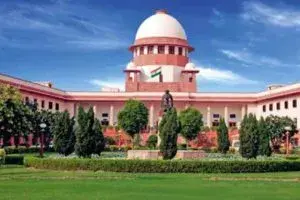“Judicial Independence does not mean that the Judges are Precluded from the Rule of Law” ….Justice D.Y. Chandrachud
In a landmark verdict pronounced by the Apex Court on November 14th, in the case of Central Public Information Officer, Supreme Court of India v. Subhash Chandra Agrwal[1], the Hon’ble Five-Judge Bench of the Supreme Court has held that the “Chief Justice of India” is a “public authority” under the Right to Information Act, 2005.
The 108- page judgment is a unanimous decision taken by the Bench, upholding Hon’ble Delhi High Court’s judgment of 2010 wherein the High Court had held that the Supreme Court and the Office of the Chief Justice of India are “public authorities” and hence fall within the purview of the Right to Information Act, 2005.
The appellants while challenging order of the Delhi High Court have contended that disclosure of information sought would impede the independence of judges as it fails to recognise the unique position of the judiciary within the framework of the Constitution which necessitates that the judges ought not to be subjected to ‘litigative public debate’ and such insulation is constitutional, deliberate and essential to the effective functioning of the institution. It was further argued by the Respondent that Right to information is not an unfettered constitutional right, albeit a right available within the framework of the RTI Act.
Relevant extract from the Judgment succinctly holding that Chief Justice of India is a “public authority” under the RTI Act, 2005:
“The expression ‘public authority’ as used in the RTI Act is of wide amplitude and includes an authority created by or under the Constitution of India, which description holds good for the Chief Justice of India. While the Chief Justice of India is designated as one of the competent authorities under Section 2(e) of the RTI Act, the Chief Justice of India besides discharging his role as ‘head of the judiciary’ also performs a multitude of tasks assigned to him under the Constitution and various other enactments. In the absence of any indication that the office of the Chief Justice of India is a separate establishment with its own CPIO, it cannot be canvassed that “the office of the CPIO of the Supreme Court is different from the office of the CJI” (that is, the Chief Justice of India).”
The present verdict is a landmark judgment establishing and strengthening the roots of RTI in India. The inclusion of Judiciary under the purview of RTI was a long debated issue and this judgment puts a rest on it.
[1] Civil Appeal No. 10045 of 2010


